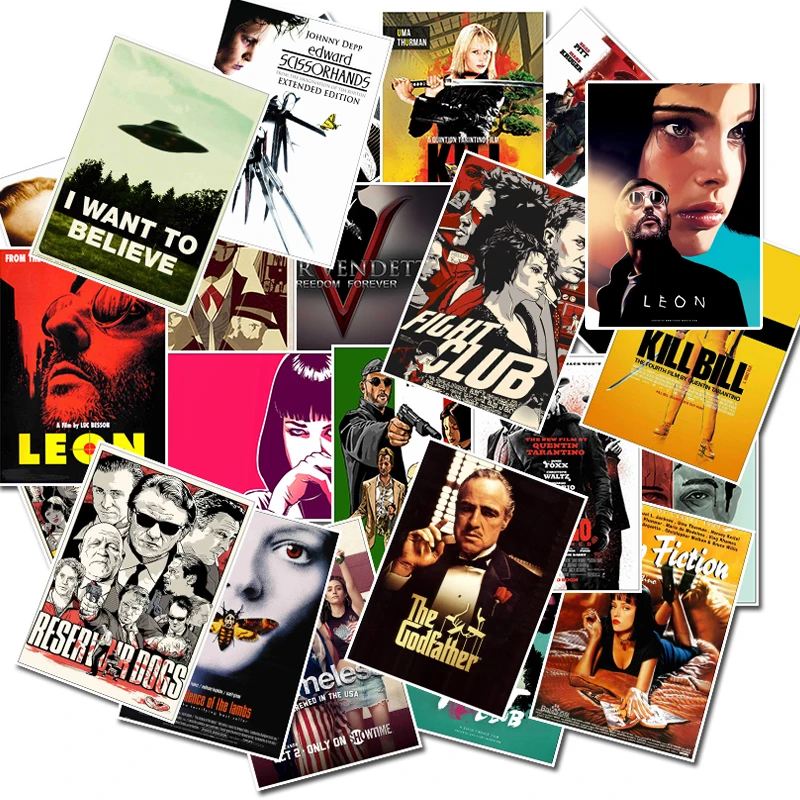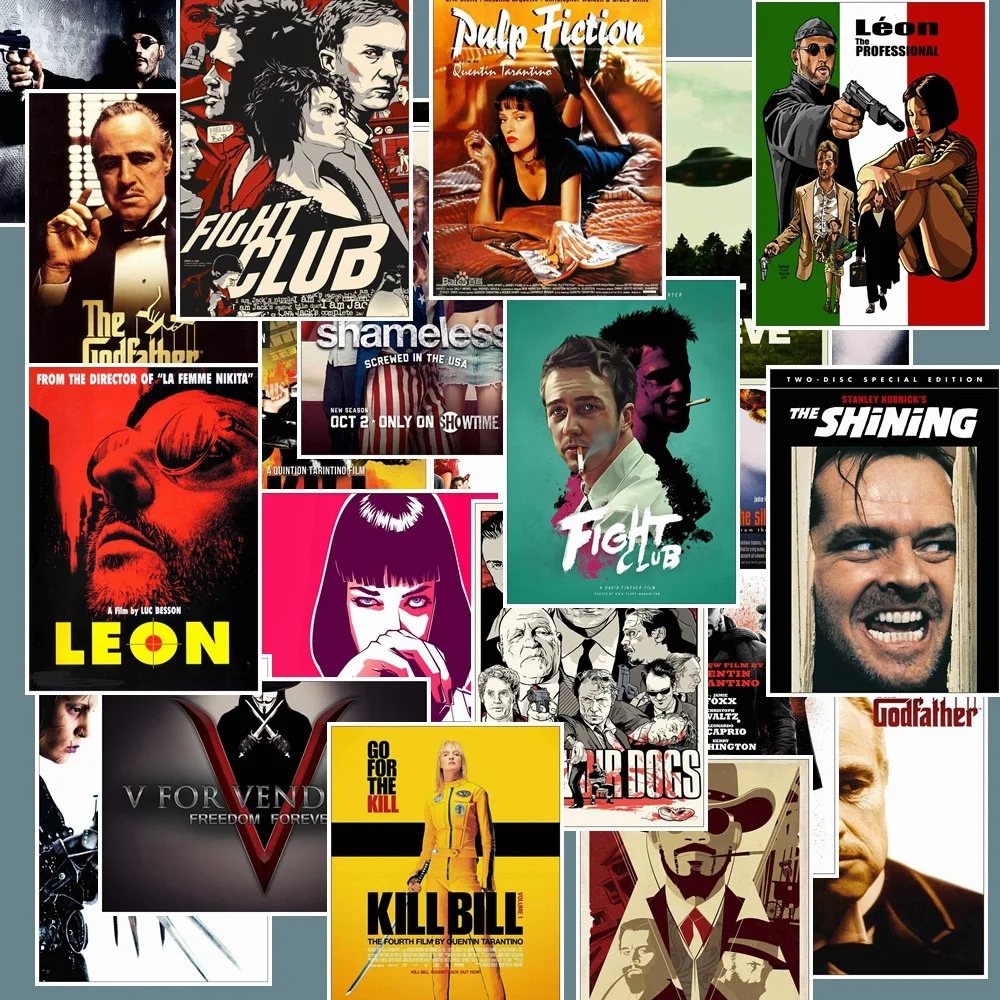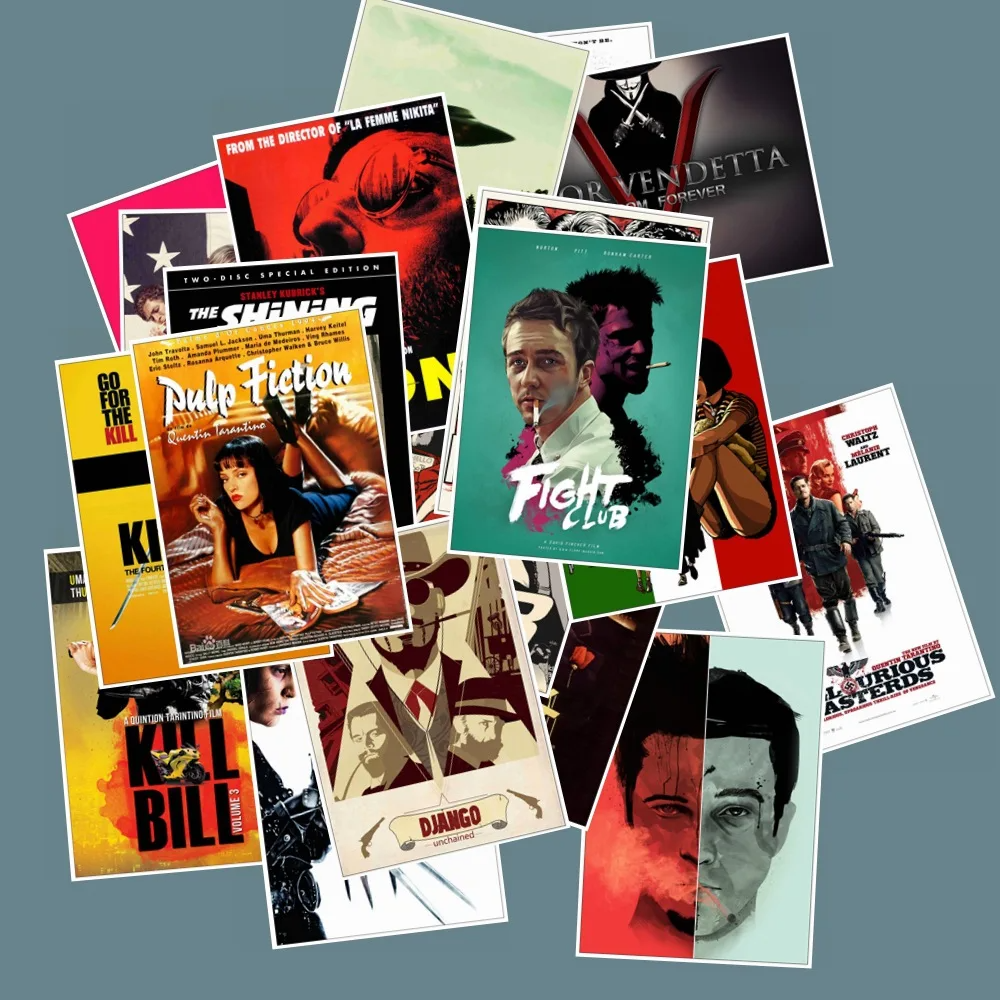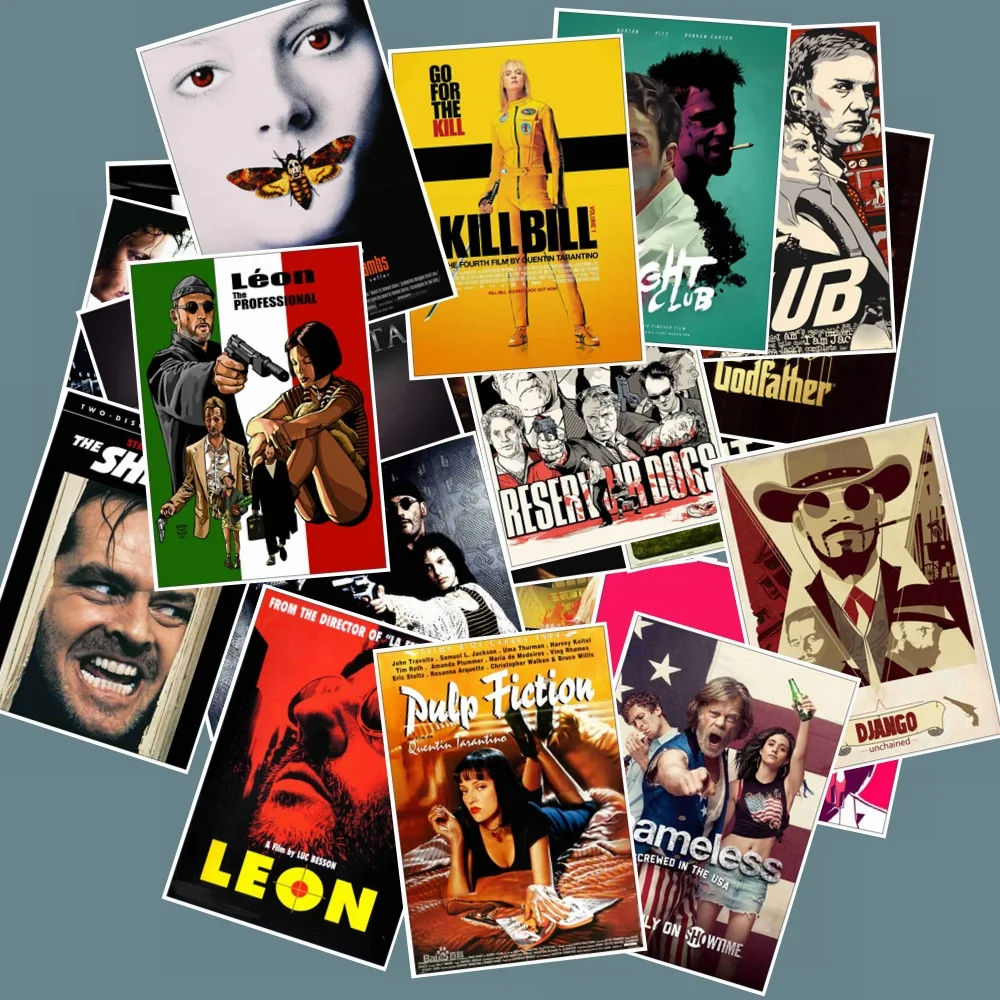In the realm where artistry meets adoration for cinema, custom movie stickers have emerged as a popular medium for fans to express their love for the silver screen. These tiny, adhesive works of art not only adorn laptops, notebooks, and walls but also serve as conversation starters, connecting individuals through a shared passion for film. If you’re eager to dive into crafting your own unique movie stickers, this comprehensive guide will illuminate the path, walking you through concept ideation, design principles, printing techniques, and even ethical considerations.
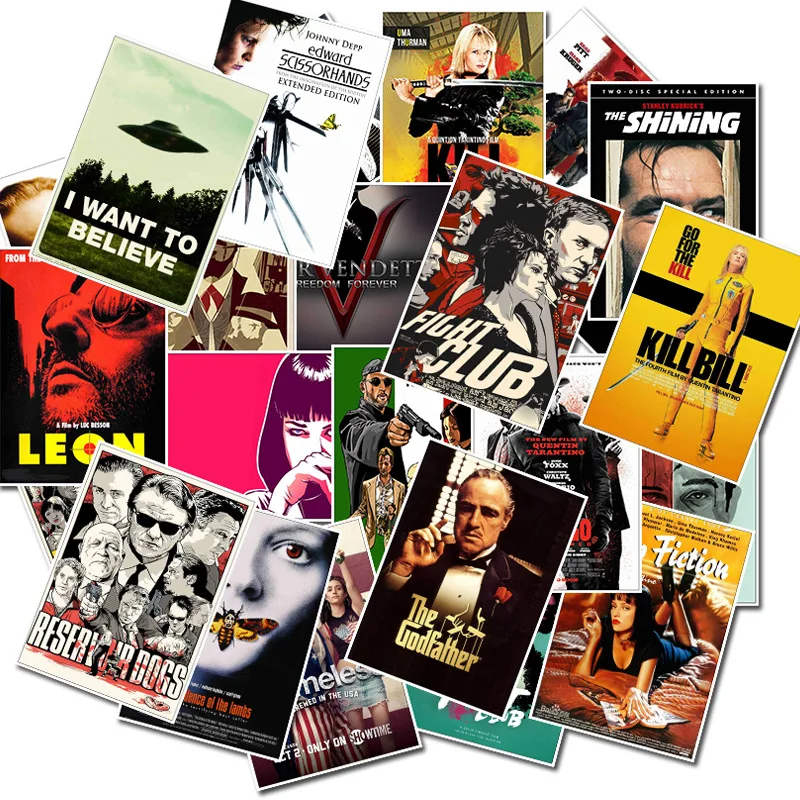
Unleashing Creativity: Conceptualizing Your Sticker Designs
Unleashing creativity in designing movie sticker collections involves tapping into the essence of each film, its characters, themes, and iconic moments to create visually striking and emotionally resonant artwork. Here’s a step-by-step guide on how to conceptualize your movie sticker designs:
1. Research and Immersion
- Deep Dive into the Film: Start by thoroughly watching and analyzing the movie(s) you want to design stickers for. Take note of the color palette, key scenes, character traits, and any symbolism that could be translated into visual elements.
- Understand the Audience: Consider who the primary audience for these stickers is. Are they fans of the specific genre, die-hard enthusiasts of the movie, or a broader audience? This will help tailor the design style and complexity.
2. Theme and Concept Identification
- Identify Core Themes:Distill the core themes or emotions of the film, such as love, adventure, courage, etc. These can become the inspiration for the design.
- Iconic Moments & Characters: List down the most memorable scenes, quotes, and characters that resonate with viewers. These elements often make for instantly recognizable stickers.
3. Style and Aesthetics
- Choose a Style: Decide on an artistic direction. Will it be cartoonish, realistic, minimalist, or a mix? The style should complement the movie’s tone and appeal to your target audience.
- Color Scheme: Use the movie’s color palette as a base but don’t be afraid to experiment. Consider contrast and vibrancy to ensure stickers stand out.
4. Sketching and Iteration
- Sketch Initial Concepts: Start sketching rough ideas, exploring different compositions, and playing with how elements can interact within the sticker format.
- Refine and Iterate: Based on initial feedback, refine your sketches. This might involve simplifying designs, adjusting colors, or reworking compositions until you’re satisfied.
5. Incorporating Interactivity (Optional)
- AR Elements: For digital stickers, consider incorporating augmented reality features that bring stickers to life when scanned, adding an extra layer of engagement.
- Hidden Easter Eggs: Include subtle nods or inside jokes that only true fans would understand, making the stickers more rewarding for dedicated audiences.
6. Production and Material Considerations
- Print vs. Digital: Determine whether your stickers will be physical or digital (or both). This decision impacts design specifications and potential interactivity.
- Quality Check: Ensure the final designs are high-resolution and suitable for printing or digital use. Test print samples if applicable.
7. Legal Considerations
- Copyrights: It’s crucial to have the necessary permissions to use copyrighted material. If creating fan art, be aware of fair use guidelines, or consider reaching out for official licensing.
8. Promotion and Community Engagement
- Social Media: Share sneak peeks and behind-the-scenes content on social media to build anticipation and gather feedback.
- Collaborate with Influencers: Partner with movie bloggers or influencers to showcase your stickers, tapping into their engaged fan bases.
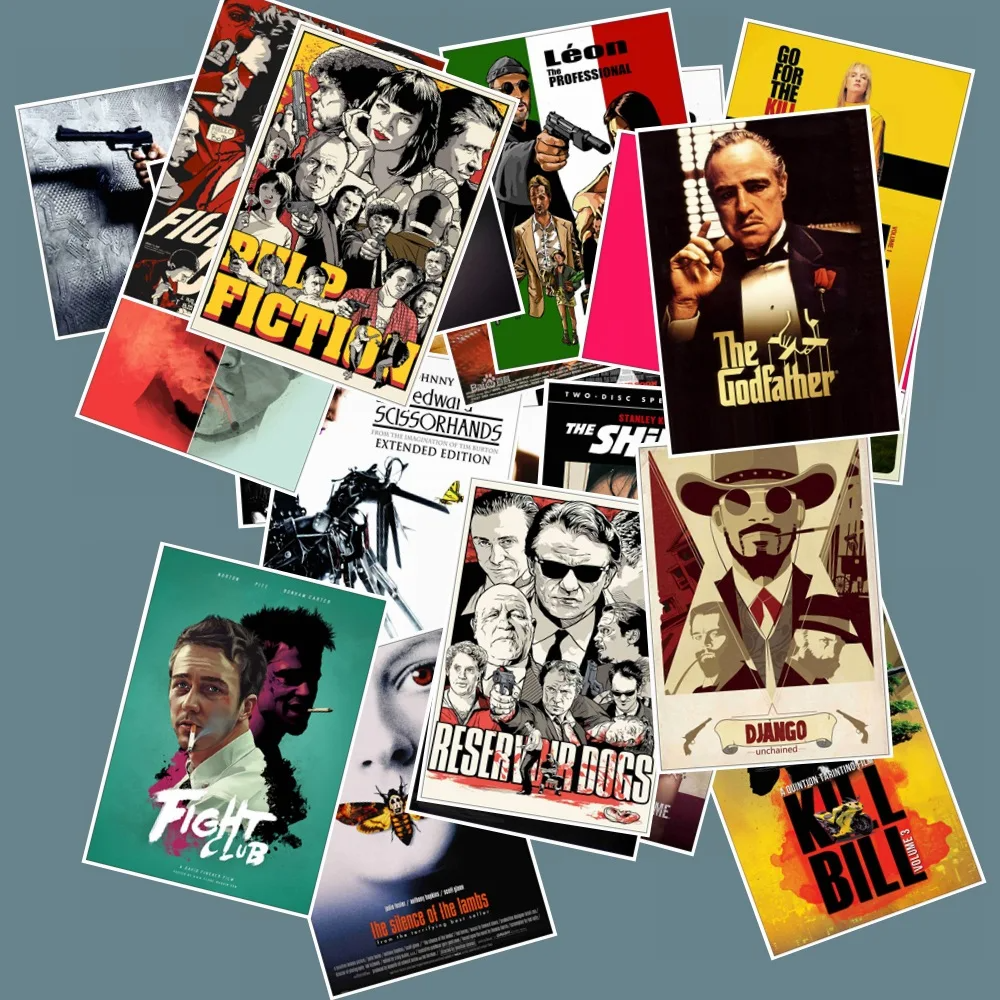
By following this process, you can create movie sticker designs that not only capture the spirit of the films but also foster a deeper connection between fans and their favorite cinematic experiences. Remember, the key to great design is telling a story through visuals, so let your creativity run wild while staying true to the heart of each movie.
Design Fundamentals: The ABCs of Aesthetics
Color Theory
Color plays a pivotal role in capturing the essence of a movie. Use a color palette that reflects the mood and tone of the film—warm hues for nostalgic flicks, cool tones for thrillers. Remember, color psychology can influence how your stickers are perceived, so choose wisely.
Typography Matters
The right font can elevate a sticker from ordinary to extraordinary. For dialogue-based stickers, consider typography that complements the era or style of the film. Script fonts for period dramas, sans-serif for modern comedies, and grungy textures for horror movies can all enhance the design’s authenticity.
Simplicity is Key
In sticker design, less is often more. Aim for clarity and simplicity. Overcomplicated designs may lose impact when scaled down to sticker size. Focus on creating a design that’s instantly recognizable, even at a glance.
Printing Techniques: Bringing Your Designs to Life
Digital Printing
Digital printing offers flexibility and precision, making it ideal for custom designs. It allows for full-color prints, ensuring your stickers capture every detail of your digital artwork. Look for printers that specialize in high-quality sticker printing and offer a range of materials, from glossy to matte finishes.
Vinyl vs. Paper
Choose your material wisely. Vinyl stickers are durable and water-resistant, perfect for outdoor use or longevity. Paper stickers, on the other hand, offer a more vintage feel and are cost-effective for indoor applications.
Cutting Edge: Die Cutting
Die-cut stickers follow the contour of your design, eliminating the need for a boring square or rectangle border. This technique adds an extra layer of uniqueness and professionalism to your creations.
Ethical Considerations: Respecting Copyrights and Creativity
Understanding Copyright Law
Before embarking on your sticker venture, familiarize yourself with copyright laws. Using copyrighted material without permission can lead to legal issues. Consider designing original interpretations inspired by movies rather than directly replicating movie posters or logos.
Supporting Independent Artists
If you’re not designing the stickers yourself, source designs from independent artists who offer licensing options. This not only supports creativity within the community but also ensures your project adheres to ethical standards.
Promotion and Distribution: Sharing Your Creations
Social Media Marketing
Leverage social media platforms to showcase your stickers. Instagram and Pinterest are visual-heavy platforms where stickers can shine. Engage with movie fan communities, share behind-the-scenes content, and offer giveaways to generate buzz.
Collaborations and Partnerships
Consider partnering with local cinemas, film clubs, or online movie forums to promote and sell your stickers. Collaborative efforts can expand your reach and tap into existing fan bases.
Conclusion: Crafting a Legacy Through Stickers
Custom movie stickers are more than just decorative items; they’re tangible expressions of cinematic admiration. By following this guide, you’re equipped to design stickers that not only capture the magic of the movies but also ignite conversations and foster connections. Remember, the process of creation is as important as the final product. Embrace each step with enthusiasm and respect for the art form, and watch as your stickers become cherished tokens of a collective love for the seventh art.
